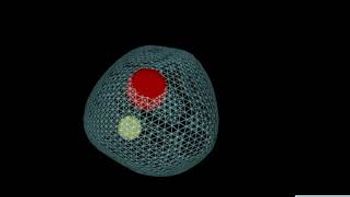
The Current and Emerging Treatment Landscape of mCRPC
Episodes in this series

[Transcript]
Raoul Concepcion, MD, FACS: Gents, this has been a great discussion. Let’s wrap up with the patient who started all this, the metastatic castration-resistant prostate cancer [CRPC] patient. To just give a definition for the viewer, CRPC is defined as a patient with prostate cancer who is on hormonal therapy, whether it’s ADT [androgen deprivation therapy] or bilateral orchiectomy; with testosterone in the castration range, currently defined as less than 50 [ng/dL]; and a rising PSA [prostate-specific antigen], generally at least 2 [ng/dL] rises taken at least 1 to 2 weeks apart.
We’ve had a robust discussion on the nonmetastatic patient. Let’s talk about this patient who-again, there will be more options-is a metastatic castration-resistant prostate cancer [mCRPC] patient. Dr Sieber, my friend, this is what started all this back in 2010. Give us a little bit of an overview. Give us the current landscape of approved agents for mCRPC. I’ll let you decide if you want to do it mechanistically or how you want to give us that summation.
Paul Sieber, MD: It’s so much easier mechanistically. There aren’t that many I have to go through, right? I have only 4 different classes to talk about. I could talk about cytotoxics, which include docetaxel and cabazitaxel. We’ve got 1 immunotherapy, Provenge. We’ve got 2 orals-slightly different categories but 2 orals. We’ve got both abiraterone and enzalutamide. And we have 1 radiopharmaceutical, radium-223. In the category of designed agents to treat metastatic disease, that’s pretty much it for the moment. But everyone is knocking at the door.
Raoul Concepcion, MD, FACS: Correct. Again, just to be clear, they’re all monotherapy trials. Maybe the only 1 that has a little bit of an exception is cabazitaxel because for those patients, you cannot use cabazitaxel up front unless they have been exposed to docetaxel. Right?
Paul Sieber, MD: Right.
Raoul Concepcion, MD, FACS: There have been all those approvals. Obviously, docetaxel in 2003, 2004; everything else came onboard from 2010 to 2015. And now, Paul, as you said, there’s a host of agents knocking at the door. Jorge, give us a little overview of what we’re expecting in 2020.
Jorge Garcia, MD: I certainly don’t speak for the regulatory agencies or what the regulatory agencies will do. But I think, perhaps to me the most exciting trial in 2019 for prostate cancer is PROfound. The PROfound data actually tackles a very simple question, and that is, DNA repair-deficient patients. For many, many years, we have known that patients who have a DNA repair defect-ie, most commonly people are known as BRCA1, BRCA2 or ATM-mutant patients-can have pretty poor outcomes and oftentimes have quite aggressive disease.
The incidence of true germline mutations, which is ATM, BRCA1 and BRCA2, and many other ones, is pretty low in the United States. You can probably look at the data from Seattle, Washington. The true incidence of germline for men with prostate cancer is probably under 9%, 10%. But there is another series of somatic changes, or epigenetic changes, that also are DNA repair by nature and can also be exploited therapeutically. I think that’s the genesis of these data that started with Joaquin Mateo with what we’ll call the PARP data, which suggested that actually men with metastatic castration-resistant disease who were receiving an oral PARP inhibitor-in this case, olaparib-had a significant improvement in progression and also good PSA declines. When you tease out who these patients were, it appears they were those who had true ATM, and BRCA1 and BRCA2s, so true germline patients.
That was the genesis for the PROfound data that Dr Maha Hussain presented at ESMO [European Society for Medical Oncology Congress] in Barcelona. I wouldn’t say it’s complex, but it’s a randomized trial that basically addressed a simple question. If you have progressive disease in the metastatic castration-resistant setting, you get randomized to get either olaparib or an oral agent, the 1 you have not seen before. If you had ABI [abiraterone] for M1 CRPC, and you get randomized to oral therapy, you will get an oral therapy, the 1 you didn’t receive-and vice versa, enzalutamide followed by ABI [abiraterone].
But the important part of that randomization was that those patients were selected patients based on the type of DNA repair deficiency that they have. Group 1, or cohort 1, was patients with BRCA1, BRCA2, and ATM mutations randomized to olaparib or the oral agents that they haven’t seen before. And the in Group B were patients with any other different DNA repair deficiency outside BRCA1, BRCA2, and ATM. So there’s 8, 12, other DNA repair deficiencies that we isolated. Those patients were randomized to the PARP inhibitor and/or to an oral agent or AR [androgen receptor] inhibitor.
The primary end point of this trial was not for cohort B. It was cohort A, which was actually what I would call the true germline patients. It’s the first time a biomarker-driven approach clearly demonstrated RPFS [radiographic progression-free survival] improvement, and a survival improvement to a PARP inhibitor over an oral agent in that patient population. When you included those groups-cohort A and cohort B, which is basically all the DNA repair deficiencies-that benefit was maintained.
Some of us were a bit concerned as to the impact of that second cohort of patients because there were not ATM, BRCA1sand BRCA2s. But it appears that the hazard ratios were maintained for our PFS [progression-free survival]. We do know that BRCA1 and then BRCA2 are exquisitely sensitive to PARP inhibitors. We do know also that not all DNA repair deficiencies are responsive to PARP inhibitors. That’s something that once this agent hopefully gets up and we can put our hands on this class of agents, we’re going to start teasing out the true patients who may benefit the most from this class of agents.
For me that really is going to revolutionize how we manage patients with DNA repair deficiencies. And it will also add the question as to the utility of platinum-based compounds for those patients. We know that those patients with DNA repair deficiency may benefit from carboplatin- and cisplatin-based therapy and may have some behaviors like neuroendocrine or small cell phenotypes for that matter. That is a pivot on the management of prostate cancer in 2020, and hopefully many years after that.
Lastly, perhaps what a lot of people are enthusiastic about as well, is moving away from the ribonucleotide set of all agents, the alpha emitters, and trying to use PSMA [prostate-specific membrane antigen]-not only as a diagnostic tool, meaning that we don’t use Gallium-67 just to tap PSMA and label someone, but also for therapeutic purposes. And that’s sort of data with lutetium-177. The VISION trial is the largest randomized phase III data that we have. That also is completed, fully accrued, and that data basically were randomized in patients to lutetium PSMA when they have Gallium PSMA-positive disease or standard therapy, dealer’s choice. That data will demonstrate whether this class of agents would really pan out to be part of what we do in the future.
Panelists:
- Raoul Concepcion, MD, FACS, Vanderbilt University School of Medicine, Nashville, Tennessee
- Jahan Aghalar, MD, Board-certified Hematologist and Oncologist, New York, New York
- Gordon Brown, MD, Rowan University School of Osteopathic Medicine, Glassboro, New Jersey
- Jorge Garcia, MD, Cleveland Clinic, Cleveland, Ohio; Jonathan Henderson, MD, Regional Urologist, Shreveport, Louisiana
- Paul Sieber, MD, Penn Medicine Lancaster General Hospital, WellSpan Ephrata Community Hospital, Lancaster, Pennsylvania
Newsletter
Stay current with the latest urology news and practice-changing insights — sign up now for the essential updates every urologist needs.
































